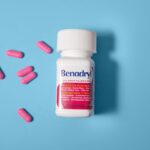If you’ve been diagnosed with advanced prostate cancer, there’s a good chance you’ll receive androgen deprivation therapy (ADT) at some point, as ADT is a mainstay of prostate cancer treatment. It works by lowering levels of testosterone, a type of androgen (a hormone) in the body that fuels prostate cancer growth. Starving the cancer of its fuel helps shrink prostate cancer tumors and prevent new ones from growing.
ADT can help increase longevity for men with prostate cancer — even those with metastatic disease. But it comes with certain side effects, some of which can be significant, research has found.
“Depleting testosterone creates a lot of systemic side effects,” says Joseph Renzulli, MD, an associate professor of urology at Yale School of Medicine in New Haven, Connecticut. “ADT does have a large impact on men, especially those who are on it long term.”
Here are some common side effects of ADT, plus tips on managing them and boosting your quality of life during prostate cancer treatment.
1. Fatigue
How to Manage Fatigue
Exercise can help increase your energy levels. Go for resistance workouts, which can help boost energy levels while maintaining bone and muscle mass, says Renzulli. Aim for about 30 minutes of exercise each day, he says.
2. High Blood Sugar
Some research has shown that people who take ADT are twice as likely to develop type 2 diabetes later on than people who haven’t been on ADT. It’s not quite clear why, but some experts believe when testosterone declines, body fat increases, which can lead to insulin resistance.
How to Manage High Blood Sugar
Your doctor may want to monitor your blood sugar levels periodically to check for diabetes. In the meantime, it’s a good idea to cut back on added sugars and processed foods and add more lean and plant-based proteins to your diet. Both can contribute to healthy blood sugar levels.
3. High Blood Pressure and Cholesterol
ADT can increase blood pressure and cholesterol, so your oncologist will likely work with your primary care doctor — and possibly a cardiologist — to monitor your levels. “It should be a team approach,” says Renzulli.
How to Manage High Blood Pressure and Cholesterol
Take steps to stay active, which can also help boost heart health. Not sure where to start? Lace up your sneakers and take a walk around your neighborhood.
Your doctor may also make treatment recommendations to help lower your risk of a cardiovascular event.
4. Weak Bones
Testosterone is an androgen hormone that helps men maintain bone strength. So lowering levels with ADT treatment can lead to bone loss, especially when combined with bone metastases. This can increase your risk of a fracture. In fact, it’s long believed that about 1 in 5 people with prostate cancer will fracture a bone within 5 years of starting ADT.
How to Manage Weak Bones
“We often encourage men … to start vitamin D and calcium supplementation [to help shore up bone health],” says Ramkishen Narayanan, MD, a urologic oncologist and the director of the Center for Urologic Health at the Disney Family Cancer Center at Providence Saint Joseph Medical Center in Burbank, California.
That said, calcium and vitamin D usually aren’t enough to reverse bone loss. To help, your doctor may also prescribe bone protection agents (BPAs), such as bisphosphonates, monoclonal antibodies, and selective estrogen receptor modulators, to help you build back bone mineral density. Some bone loss starts to occur within six months of starting ADT, so your doctor may prescribe BPAs soon after you start ADT.
5. Sexual Dysfunction
Because hormone therapy lowers testosterone levels, you’ll likely experience a drop in sexual desire and difficulty maintaining an erection. Medications to treat erectile dysfunction (ED) may help in some — but not all — cases. But ED medications don’t act on androgens, the root cause of ADT-related sexual dysfunction.
How to Manage Sexual Dysfunction
Start by opening up to your partner and incorporating them into your care. Together, you can find new ways to maintain an emotional connection and sense of intimacy in your relationship.
Psychological treatment may help you counter a loss of libido related to ADT. Some research has found that cognitive behavioral therapy (CBT) can help prostate cancer survivors treated with ADT improve their sexual desire, functioning, and satisfaction, possibly by improving body image and relationship issues that can take a toll.
To boost your desire, try seeing a CBT specialist or practicing sensate focus therapy. The approach teaches you to focus on sensations during intimacy, rather than the pressure to perform.
Discuss Side Effects at Each Checkup
Many of the side effects of ADT go away after treatment is finished, but some men have to stay on the therapy for life, says Renzulli. Additionally, some men may never regain normal levels of testosterone production. That’s a good thing for helping prevent prostate cancer from coming back, but you may continue to experience the effects of ADT for years to come as a result.
Keep in close touch with your doctors. “We strongly encourage people to maintain follow-ups with the physician prescribing the ADT to make sure any side effects are noted,” says Dr. Narayanan. “We also encourage engaging with a psychiatrist, neurologist, or psychiatric-oncologist as part of a multidisciplinary team to make sure any emotional or cognitive issues are dealt with, either with or without medication.”
The Takeaway
- Androgen deprivation therapy (ADT) lowers levels of testosterone, a type of androgen, in the body, which helps shrink prostate cancer and prevent tumors from growing.
- Suppressing testosterone levels, can also cause side effects, though, such as bone loss, fatigue, high blood pressure and blood sugar levels, and sexual function problems.
- To help ease the side effects of ADT, try communicating openly with your doctor about any side effects you’re experiencing, eating a nutritious diet, and staying active.
Read the full article here




